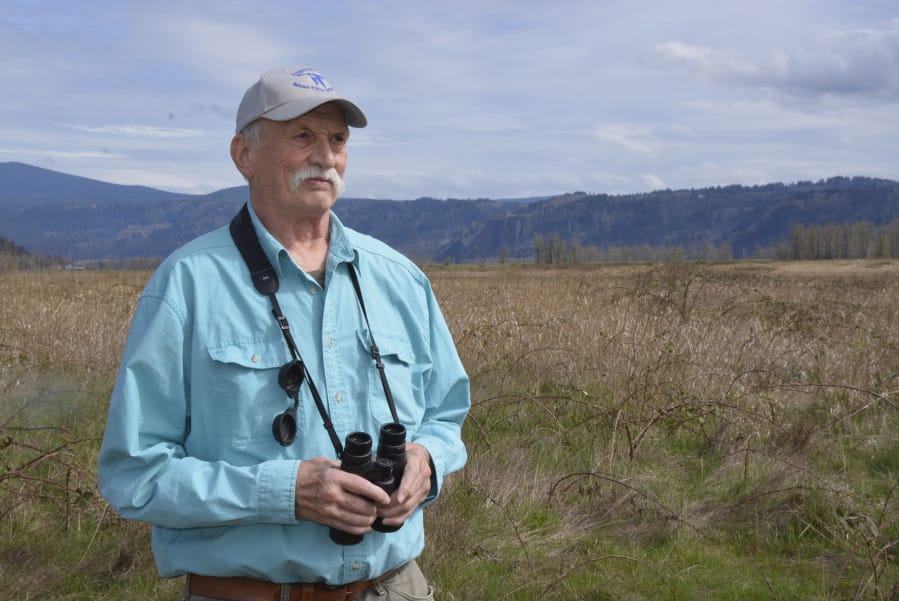If you’ve run out of things to stream online while you’re isolating at home during the COVID-19 pandemic, just look out your window.
“Birds are in your backyard,” said Wilson Cady, who is in charge of tracking sightings for the Vancouver Audubon Society. “They’ll come to a feeder. They’ll sit on top of a bush and sing to you.”
Cady, who lives near Cape Horn in Skamania County, has spotted 146 different kinds of birds on his property. Even if you live in a more urban area, he estimates you could identify 50 or 60 species over time.
“Especially during the shutdown, we’re supposedly not traveling to go look for things, but these things will come to you,” Cady said. “It’s nice to know what’s in your yard.”
Cady, now 72, got his first bird book when he was 8. For those with a newfound interest in birding, he offers some tips.
First, the equipment: It helps to have binoculars that let you see birds up close, Cady said, but if you don’t have a set, don’t let that stop you.
“You can bird without binoculars. We call it naked birding,” Cady said.
Do buy a bird guide, however. Cady is not a fan of apps for identifying birds.
“They don’t give you a complete picture of how the birds are related to each other,” he said.
Instead, he recommends “The Sibley Guide to Birds” or “National Geographic Field Guide to the Birds of North America.”
Don’t bother with a regional guide. “Birds have wings and they use them, so you never know when an out-of-place bird will show up,” Cady said.
For example, lark buntings are birds of the Midwest but one was found at Vancouver Lake earlier this month, he said.
Consult online resources: Once you have a guide you can leaf through, then it makes sense to consult online sources, Cady said.
In particular, wabirder.com offers a spreadsheet of birds spotted in Washington by county and how common they are. (American robin is rated “1” because it’s a common species for Clark County, and the aforementioned rarely sighted lark bunting is “5.”)
A site run by Cornell University and Audubon called eBird.org and its companion mobile app include photos, maps and recordings of birdsong.
If you register on eBird.org, you can keep an online checklist of your sightings, as well as search a database of birds spotted by others.
Feeders: You can visit a nursery to find plants that will lure birds into your yard. For example, if you’d like to see hummingbirds –“everybody’s favorite,” as Cady says — they like lupine, honeysuckle and columbine. You can also put out a hummingbird feeder filled with a solution of one part sugar to four parts water; no food coloring is necessary.
Thistle will attract goldfinches, and sunflower seeds will bring chickadees and others.
“I just had 16 black-headed grosbeak on my feeder,” Cady said. “You never know what will show up.”




